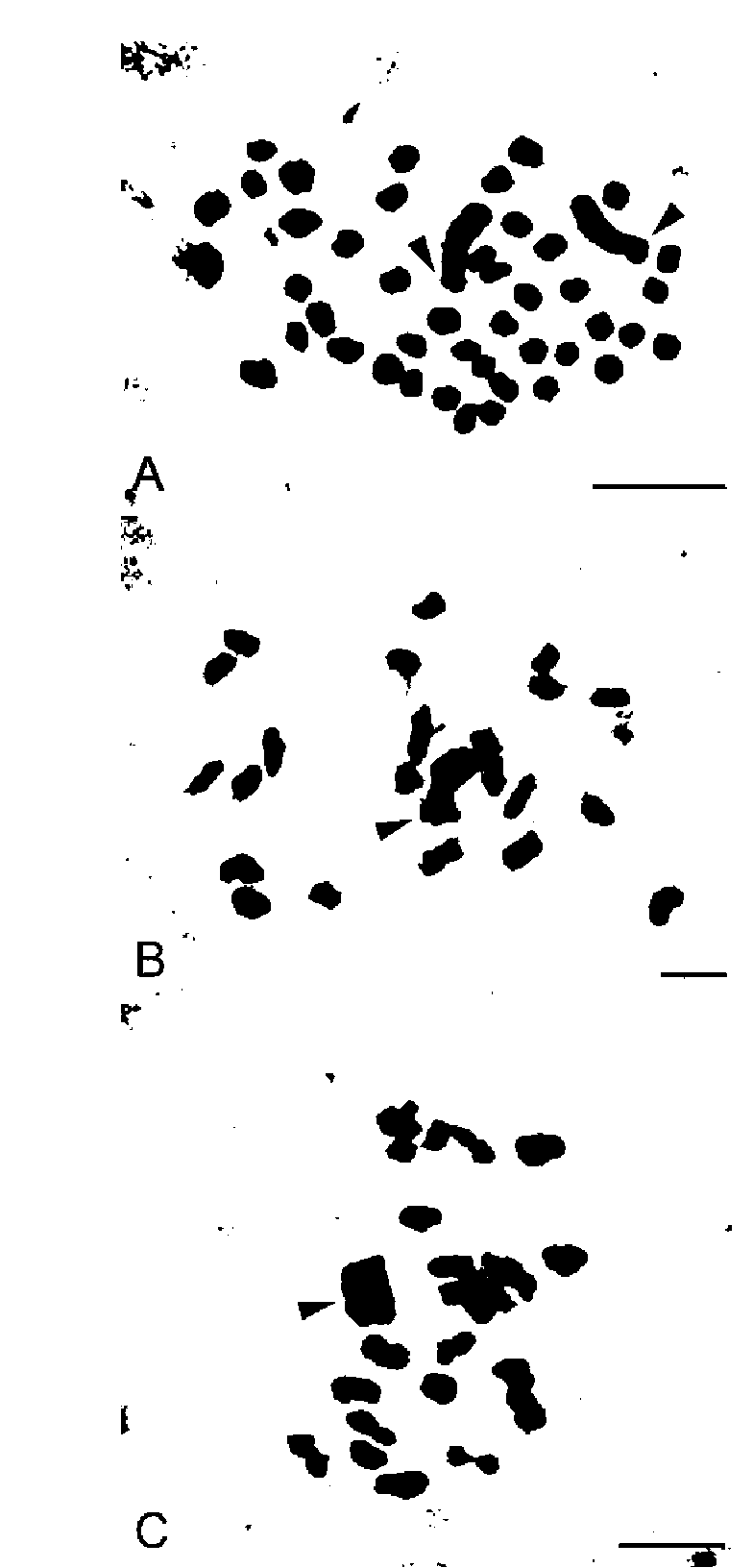338
Botanical Studies, Vol. 51, 2010

Meiotic studies were carried out in young floral buds and ovules both fresh and fixed in absolute ethanol: glacial acetic acid (3:1) and stained with 2% aceto-carmine according to Davina (2001). Bivalent and chiasmata frequencies were estimated by analysis of 30 cells at diakinesis or metaphase I. Pollen stainability was estimated in 1000 grains stained with carmine-glycerine.
Mitotic studies were performed in young ovules pretreated with saturated 1-bromonaphthalene for 3 h at room temperature and hydrolyzed in HCl 1N for 2 min at 60°C according to Davina (2001). Ovaries were macerated in a drop of 2% aceto-orcein and then squashed.
For karyotype description the chromosomes were arranged in groups according to the position of the centromere (median, m; submedian, sm) and in order of decreasing size in each class. Chromosome nomenclature followed Levan et al. (1964). Satellites were classified according to Battaglia (1955). At least ten best metaphases were selected for making idiograms. The length of chromosome arms and satellites were measured on drawings made with a camera lucida (x2600). Karyotype asymmetry was estimated using the intrachromosome (A1) and interchromosome (A2) asymmetry indices of Romero Zarco (1986), as well as the categories of Stebbins (1971).
RESULTS
Sacoila argentina has been chromosomally studied for the first time showing 2n = 46 (Figure 1A). Its karyotype is composed of 38 metacentric and 8 submetacentric chromosomes (38 m + 8 sm), most of which can not be identified, but they were organized in pairs in order to present individual measurements (Tables 1, 2; Figure 2). A terminal macrosatellite in the short arm of the largest pair (# 20, sm) carrying the active NOR was observed (Figures 1A, 2). Total chromosome length is 81.25 [im, and mean chromosome length is 1.77 μm, ranging from 1.21 μm) to 4.45 μm (sm) (Table 2), a small size. Despite the uniformity in chromosome size, the karyotype of S. argentina is bimodal due to a pair (# 20, sm) more than two times larger than the mean chromosome length (Table 2). This is also evidenced by the interchromosome asymmetry index A2 value (0.36) and by the largest/ smallest chromosome ratio R value (3.69). Most S. argentina chromosomes are metacentrics, and the rest

Figure 1. A-C, Somatic and meiotic chromosomes of Sacoila argentina. A, Mitotic metaphase with 2n = 46; B, MMC at metaphase I with 23 II; C, PMC at metaphase I with 23 II. Arrowheads in A show satellites on pair # 20 sm, and in B, C show the largest ring bivalent formed by pair # 20. Scale bars = 5 μm.
Figure 2. Idiogram of Sacoila argentina (38 m + 8 sm). Scale bar = 1 μm.